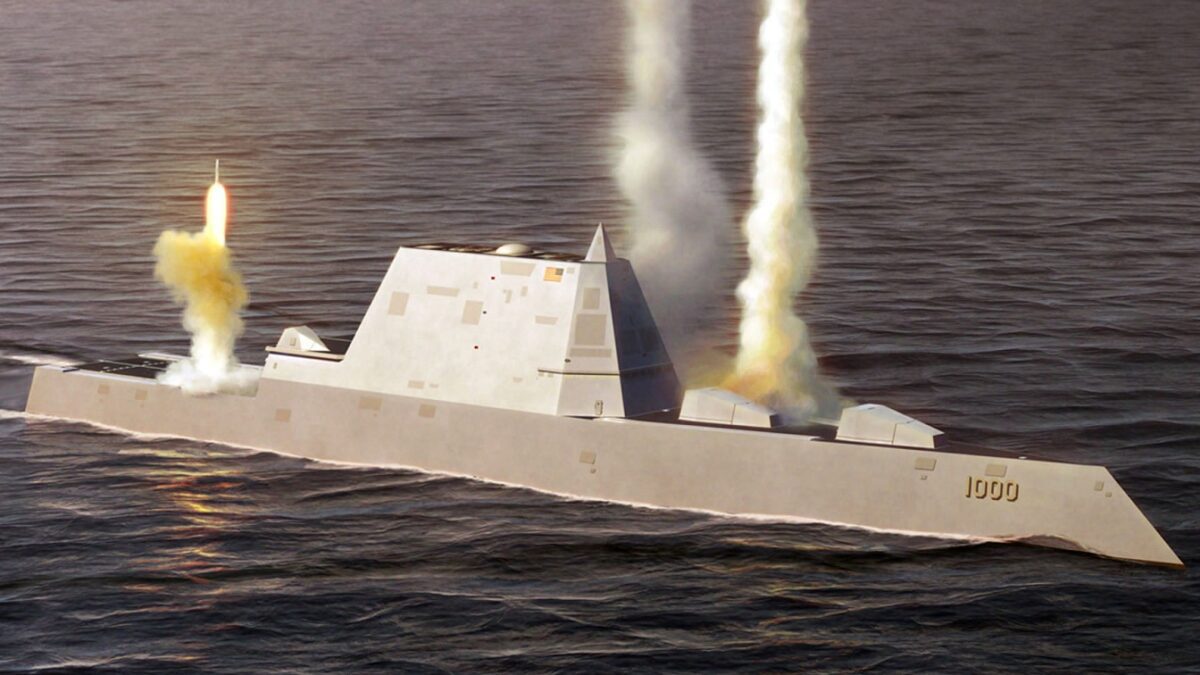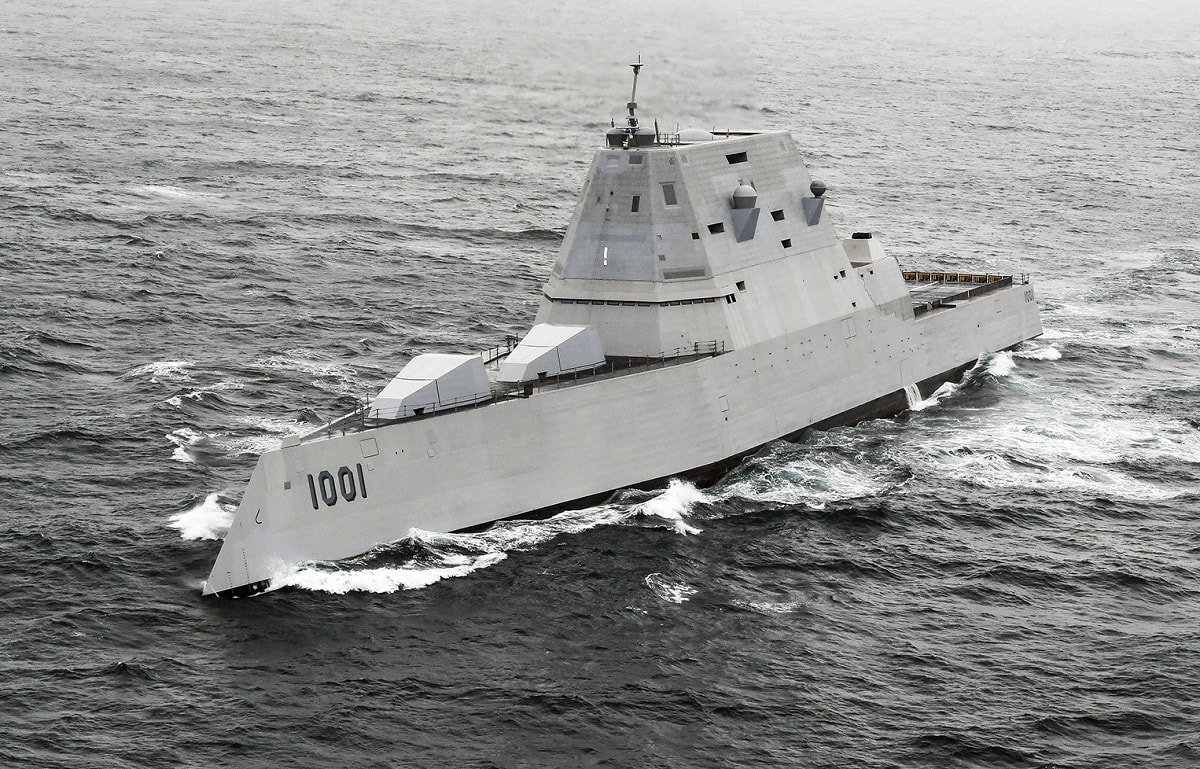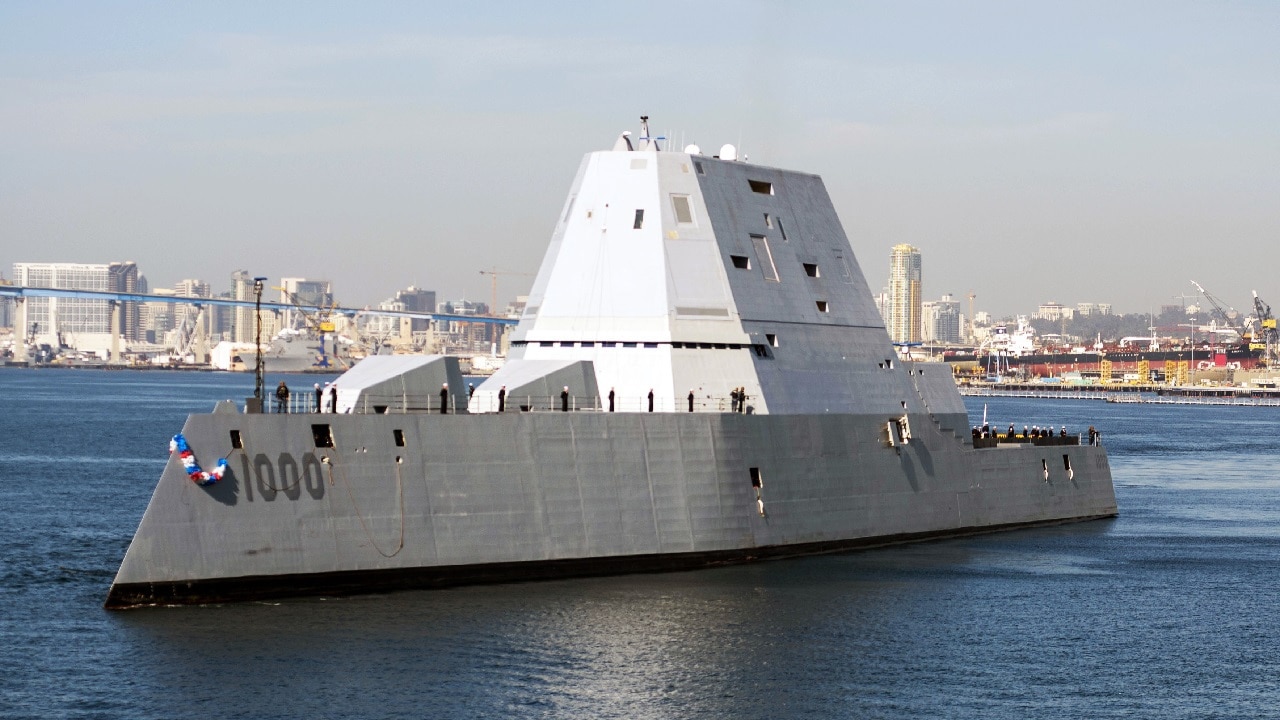The U.S. Navy’s problem-plagued high-tech destroyers will soon be armed with a new high-tech weapon – one that could make the Zumwalt-class look less like an expensive mistake.
Last week, a pre-solicitation notice from Naval Sea Systems Command made it known that Huntington Ingalls Industries has been selected to carry out the work needed to install hypersonic weapons on the USS Zumwalt (DDG-1000) and the USS Michael Monsoor (DDG-1001).
“The modernization scope of the effort will require specialized yard cranes for greater lift capacity, dry-dock facilities, covered assembly areas, and dedicated fabrication shops,” the notice stated. “Use of an alternative source, other than HII, would result in unacceptable ship and program schedule delays and would produce adverse impacts to the DDG 1000/1001 operational requirements.”
No timeline for completion was given. But Capt. Matthew Schroeder, program manager with the DDG-1000 Program Executive Office, told USNI news that the repair period to upgrade the warships with hypersonic weapons was scheduled to begin in October 2023.
The work will take place at Hill Ingalls Shipbuilding’s facilities near Pascagoula, Mississippi.
The Problem Destroyer
As a new breed of warship, the Zumwalt-class destroyers were meant to have a low radar signature, as well as the ability to engage land targets with a pair of specially developed 155mm Advanced Gun Systems that fire precision-guided shells at a range of up to 60 miles. The thinking was that in wartime, the destroyers could take on a role once employed by big-gun battleships and engage targets to create a path for an amphibious landing.
The biggest issue with the ships today is one of scale.
The U.S. Navy planned to build a fleet of these destroyers – the largest and most technologically sophisticated ever produced. At 610 feet long and about 81 feet wide, and displacing 15,761 tons, the Zumwalt–class vessels were far larger than the Navy’s Arleigh Burke-class – or any cruiser now in service, for that matter. Initially, 32 vessels were planned – with the $9.6 billion research-and-development costs spread across the whole of the class – but the program was scaled back to 24 warships. Then it was further cut back to seven, and finally, just three Zumwalt-class guided-missile destroyers were produced for the U.S. Navy. This brought the price tag to $7.5 billion per ship. In addition, the Navy reverted to building more of the proven Arleigh Burke-class destroyers.
As a result of the reduction of the Zumwalt-class, special rounds for the AGS were simply too expensive. Costs for the Long Range Land Attack Projectile, the precision-guided shell to be used in the AGS, ballooned from $50,000 to $800,000 for each round.

An artist rendering of the Zumwalt class destroyer DDG 1000, a new class of multi-mission U.S. Navy surface combatant ship designed to operate as part of a joint maritime fleet, assisting Marine strike forces ashore as well as performing littoral, air and sub-surface warfare.
Out With the Guns
The Navy had previously announced that it would have the two 155 AGS mounts aboard each of the ships removed, while new tubes would be installed to accommodate the Vertical Launch System for the Common Hypersonic Glide Body that is being developed for the U.S. Army, Air Force, and Navy. The Department of Defense successfully tested a hypersonic glide body in a flight experiment conducted from the Pacific Missile Range Facility, Kauai, Hawaii, in March 2020.
NAVSEA has not confirmed how many tubes would be installed on each of the systems, but USNI News reported that the arrangement would likely be similar to the Multiple All-up-round Canisters system developed to allow Navy submarines to field multiple missiles in a single tube. Removing AGS and replacing it with the tubes would leave about the same margins for future modifications.

210421-N-FC670-1062 PACIFIC OCEAN (April 21, 2021) Zumwalt-class guided-missile destroyer USS Michael Monsoor (DDG 1001) participates in U.S. Pacific Fleet’s Unmanned Systems Integrated Battle Problem (UxS IBP) 21, April 21. UxS IBP 21 integrates manned and unmanned capabilities into challenging operational scenarios to generate warfighting advantages. (U.S. Navy photo by Chief Mass Communication Specialist Shannon Renfroe)
As a result, the Zumwalt-class will be the first Navy warships to be equipped with hypersonic weapons, which could finally give the advanced vessels the capability to conduct their primary missions. It could correct the course for a Navy project seen as having lost its way.
A Senior Editor for 1945, Peter Suciu is a Michigan-based writer who has contributed to more than four dozen magazines, newspapers and websites. He regularly writes about military hardware, firearms history, cybersecurity and international affairs. Peter is also a Contributing Writer for Forbes. You can follow him on Twitter: @PeterSuciu.

